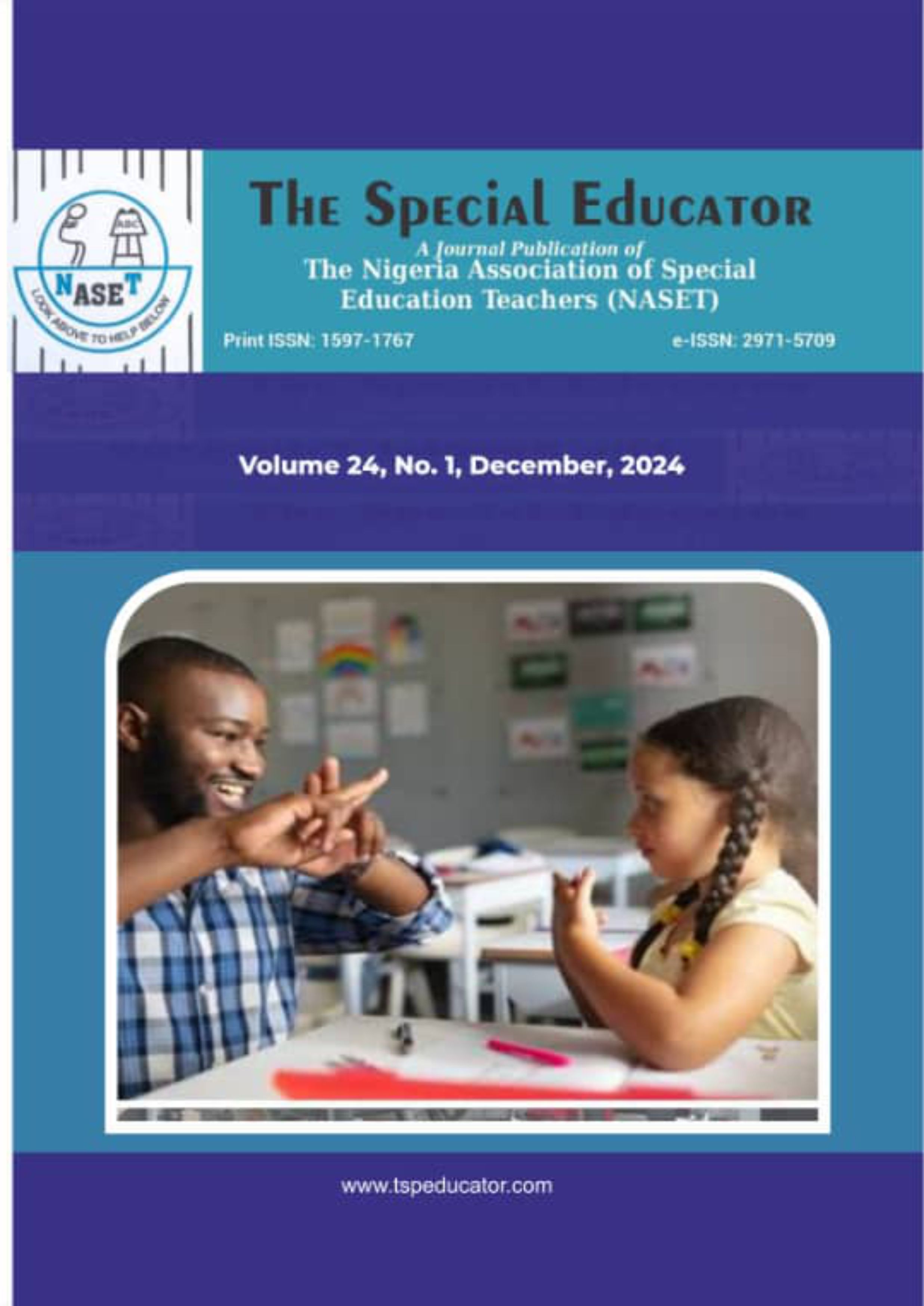Insecure Attachment and Self-Esteem of In-School Adolescents in Secondary Schools in Okpe Local Government Area of Delta State
Keywords:
Insecure, Attachment,, Self-Esteem, Adolescent, StudentsAbstract
This study investigated the association between insecure attachment and self-esteem of in-school adolescents in secondary school students. The formulation of four objectives, research questions, and hypotheses guided the study. The study was anchored on the attachment theory, with a correlational research design employed to examine the variables. The study's population was 1,590 students from private and public schools in the study area, with a sample size of 320 informed by Taro Yemen's formula for determining sample size. Data was collected using the Insecure Attachment and Self-Esteem Questionnaire. The reliability coefficient of 0.78 for the RQ and 0.82 for the RSS suggested that the questionnaires had acceptable internal consistency. Mean, standard deviation and Pearson Product Moment Correlation were used to answer the research questions while Pearson Product Moment Correlation was used to test the hypotheses at the 0.05 alpha level. The study's findings revealed a moderate connection between anxious attachment and high self-esteem, as well as avoidant attachment and low self-esteem. There was a strong connection between anxious attachment and low self-esteem, while a weaker connection was found between avoidant attachment and low self-esteem. The study concluded that insecure attachment styles, particularly anxious attachment, may have a significant impact on the self-esteem of in-school adolescents. The study recommended, among others, that the management of secondary schools should consider implementing programs or interventions aimed at addressing anxious attachment behaviours in students with high self-esteem.
References
Di Bártolo, I. (2016). Attachment: how our attachments make us who we are: clinic, research and theory. Lugar Editorial.
Finzi, R., Har-Even, D., Weizman, A., Tyano, S., & Shnit, D. (1996). The adaptation of the attachment style questionnaire for latency-aged children (Hebrew). Psychology, 5, 167-177.
Goodluck, K.U., & Njama-Abang, F.O. (2010). The place of giftedness in the Nigerian education system. Global Journal of Educational Research, 10(1), 49-53.
Ha, Y. J. (2006). The relationship among self-esteem, internal locus of control, and psychological well-being. Unpublished Master Dissertation, Yonsei University, South Korea.
Hernández Figueroa, S. I., & Cáceda Mori, J. B. (2021). Attachment styles and emotional dependence in young students of a University of Cajamarca, 2021 [Master's Thesis, Universidad Privada Antonio Guillermo Urrelo]. http://repositorio.upagu.edu.pe/handle/UPAGU/1992
Jamil, S., Habib, H.A., & Lodhia, L. (2020). Attachment style and self-esteem among adolescents. Research Journal of Social Sciences & Economics Review, 1(4), 11-21.
Lavoie, R. (2012). Self-esteem: The cause and effect of success for the child with learning differences. http://www.cesa4.k12.wi.us/cms_files/resources/12winterparapost.pdf.
Mackinnon, N. J. (2015). Self-esteem and beyond. New York: Palgrave Macmillan.
Martínez-Álvarez, J. L., Fuertes-Martín, A., Orgaz-Baz, B., Vicario-Molina, I., & González-Ortega, E. (2014). Affective attachments in childhood and quality in young adult couple relationships: the mediating effect of current attachment. Anales de Psicología/Annals of Psychology, 30(1), 211-220
Mikulincer, M., & Shaver, P. R. (2007). The attachment behavioral system in adulthood: Activation, psychodynamics, and interpersonal processes. In M. P. Zanna (Ed.), Advances in experimental social psychology 35(1), 53–152). San Diego, CA: Academic Press
Moksnes, U. K., & Espnes, G. A. (2012). Self-esteem and emotional health in adolescents-gender and age as potential moderators. Scandinavian Journal of Psychology, 53, 483-489.
Murphy, C. M., Stosny, S., & Morrel, T. M. (2005). Change in self-esteem and physical aggression during treatment for partner violent men. Journal of Family Violence, 20, 201-210.
Narváez, B. L. R., Castiblanco, J. U., Valencia, M. M., & Riveros, F. A. (2019). Parental attachment styles and emotional dependence in romantic relationships in a sample of young university students in Colombia. Diversitas: Perspectives in Psychology, 15(2), 285-299.
Ravitz, P., Maunder, R. G., Hunter, J.J., Lokunge. B., & Lancee. W.(2010). Adult Attachment measures: A 25-year review. Journal of Psychosomatic Research 69(4):419-32. DOI: 10.1016/j.jpsychores.2009.08.006
Rosenberg, M. (1965). Society and the Adolescent Self-Image. Princeton, NJ: Princeton University Press.
Sedikides, C., & Gress, A. P. (2003). Portraits of the self. In M. A. Hogg and J. Cooper (Eds.), Sage handbook of social psychology (pp. 110-138). London: Sage.
Sroufe, L. A. (2005). Attachment classification from the perspective of infant-caregiver relationships and infant temperament. Child Development, 56, 1-14.
Stavropoulos, V., Lazaratou, H., Marini, E., & Dikeos, D. (2015). Low family satisfaction and depression in adolescence: The role of self-esteem. Journal of Educational and Developmental Psychology, 5, 109-118.
Trujillo, H. M., Martínez-González, J. M., & Vargas, C. (2013). Associative relationships between beliefs about social drug use and consumption in young students. Universitas Psychologica, 12(3), 875-885.
Vega, E. (2023). Insecure attachment as a predictor variable of dependence towards people and substances in young people. MLS-Psychology Research, 6 (1), 25-44. doi: 10.33000/mlspr.v6i1.1277.
Vega, W. (2021). Effects of identity styles and insecure attachment dimensions on internalizing behaviors. Open Access Master's Theses. https://digitalcommons.uri.edu/theses/2094
Wang, Y., & Ollendick, T. H. (2001). A cross-cultural and developmental analysis of self-esteem in Chinese and Western children. Clinical Child and Family Psychology Review, 4, 253-271.


